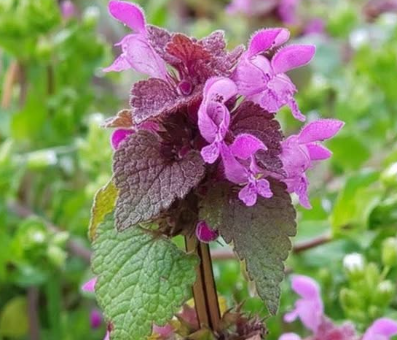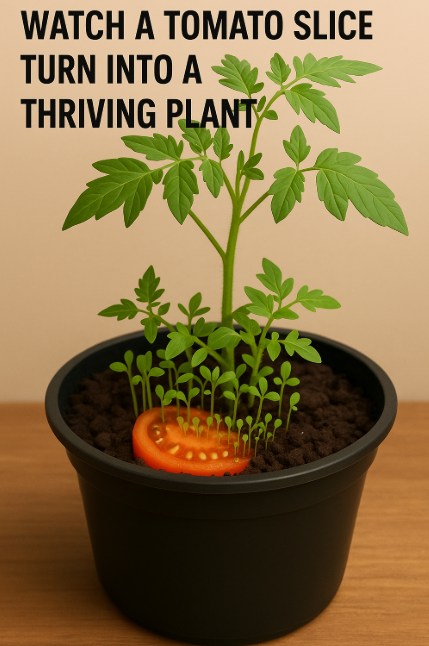🌿 Purple Dead Nettle: 10 Surprising Uses for This Common Yard Weed
Have you ever spotted the fuzzy, purple-tinged leaves of Lamium purpureum carpeting your lawn each spring? Don’t pull them out—they’re a powerful ally for gardeners, foragers, and home remedy enthusiasts alike. Purple dead nettle (often mistaken for stinging nettle) is non‐stinging, edible, and packed with nutrients, making it one of the most versatile wild greens around.
In this guide, we’ll explore 10 practical ways to harness purple dead nettle in your home, garden, and kitchen—from natural dyes and salves to chicken snacks and bee forage. You’ll also find expert tips on harvesting, preparation, and safety so you can make the most of this humble—but mighty—plant.
1. Natural Dye for Wool & Yarn
Extract a subtle pink to mauve hue by simmering fresh purple dead nettle leaves:
- Harvest: Pick 2–3 cups of young leaves in mid‐spring before the plant flowers.
- Mordant: Pre-soak wool or yarn in a 5% alum solution (5 g alum per 100 g fiber) for 1 hour, then rinse.
- Dye Bath: Simmer leaves in 1 L water for 30 minutes, strain, then add pre-mordanted fiber and heat gently for 45 minutes.
- Rinse & Dry: Cool dye bath, rinse fiber until water runs clear, then air‐dry.
Pro Tip: Add a splash of white vinegar (10 mL) to the dye bath to deepen the pink tones.
2. Nutritious Chicken Snack
Poultry love purple dead nettle as much as you do! Its tender leaves are high in vitamins A, C, and iron.
- Preparation: Rinse leaves thoroughly, chop into bite-size pieces, and mix into chicken feed.
- Serving: Offer up to 10% of total feed weight once or twice weekly to boost flock health.
Benefit: Natural greens improve egg yolk color and provide enrichment for free‐range flocks.
3. Topical First Aid for Bites & Minor Wounds
For an immediate herbal remedy:
- Chew & Apply: Lightly crush 2–3 fresh leaves to release sap, then press onto an insect bite or small cut.
- Wrap (Optional): Secure with a clean bandage for 10–15 minutes.
Dead nettle’s anti-inflammatory and antibacterial properties help soothe itching and prevent infection.
4. Soothing Throat Spray
Create a simple herbal throat tonic:
- Infuse: Steep 1 cup of chopped leaves in 1 cup boiling water for 10 minutes.
- Strain & Add: Mix 1 tsp raw honey and ½ tsp apple cider vinegar.
- Bottle: Transfer to a small spray bottle. Spray 2–3 times toward the back of your throat as needed.
Note: Honey adds additional antibacterial action and soothes irritation.
5. Early Spring Bee Forage
Purple dead nettle blooms early—often before much else in the yard—providing vital nectar and pollen for emerging bees. Encourage pollinators by leaving patches unweeded:
- Habitat: Allow flowering stems to stand; bees will flock to the tubular blooms.
- Benefit: Supports hive strength and early‐season brood development.
6. Anti-Inflammatory & Antibacterial Infusion
Use purple dead nettle as a general‐purpose healing tea:
- Steep: Add 1 tbsp dried leaves (or 2 tbsp fresh) to 1 cup hot water for 10 minutes.
- Drink: Enjoy up to 3 cups daily to support immune function and reduce inflammation.
The plant’s high antioxidant content makes it a gentle tonic for skin, digestion, and respiratory health.
7. Flavorful Pesto
A wild‐green twist on classic pesto:
- Ingredients: 2 cups fresh leaves, ½ cup nuts (pine, walnut, or almond), ½ cup Parmesan, 1 garlic clove, ½ cup olive oil, salt & pepper to taste.
- Method: Pulse leaves, nuts, cheese, and garlic in a food processor, then drizzle in oil until smooth. Season and serve on pasta, sandwiches, or crostini.
8. Fresh Salad Addition
Young purple dead nettle leaves have a mild, slightly sweet flavor—perfect raw in spring salads:
- Mix: Combine with baby spinach, arugula, or mixed greens.
- Dress: Lemon vinaigrette or tahini dressing highlights the nettle’s subtle herbal notes.
Nutrition: Adds fiber, vitamins, and trace minerals not found in typical lettuces.
9. DIY Salves & Balms
Infused oil from purple dead nettle makes a soothing salve:
- Oil Infusion: Submerge 1 cup fresh leaves in 2 cups carrier oil (olive or jojoba) and gently heat (in a double boiler or slow cooker) for 4–6 hours. Strain.
- Salve: Melt 1 oz beeswax in the infused oil, pour into jars, and cool. Use on dry skin, minor irritations, or chapped hands.
Dead nettle’s antioxidant and anti-inflammatory compounds help nourish and soothe skin.
10. Eco-Friendly Plant Tonic
Boost garden health by adding a rhizosphere spray:
- Make a Tonic: Steep 2 cups chopped leaves in 1 gal water overnight.
- Spray: Dilute 1:5 with water and mist around vegetable or flower beds to deter pests and feed beneficial microbes.
This gentle brew can reduce fungal issues and improve soil vitality when used as a foliar spray.
🛡️ Safety & Harvesting Tips
- Identification: Purple dead nettle is distinct from stinging nettle—look for heart-shaped, scalloped leaves and a square stem.
- Harvest Responsibly: Pick only up to one-third of any patch and avoid polluted areas (roadsides or lawns treated with chemicals).
- Gloves Recommended: Although non‐stinging, wearing gloves prevents mess and potential skin sensitivity.
- Store Properly: Fresh leaves keep 2–3 days in the fridge; dry in a single layer or use a dehydrator at low heat for long‐term storage.
🔗 Related Articles (Internal Linking)
- 4 Homemade Natural Insect Sprays to Safely Banish Ants, Roaches, Bed Bugs & Mosquitoes
- Natural Home Remedies: Kitchen Ingredients That Heal
- Organic Composting 101: Speed Up Decomposition & Reduce Waste
- DIY Natural Dyes from Pantry & Garden Ingredients
- DIY Organic Cleaners for a Chemical-Free Home
🌟 Conclusion
Purple dead nettle may be everywhere, but its potential goes far beyond a mere weed. From nourishing spring salads and savory pest-repellent sprays to vibrant natural dyes and soothing salves, this unassuming plant can enrich your home, garden, and pantry. Next time you encounter a patch of dead nettle, pause before you pull—there’s a world of herbal magic waiting to be unleashed!






